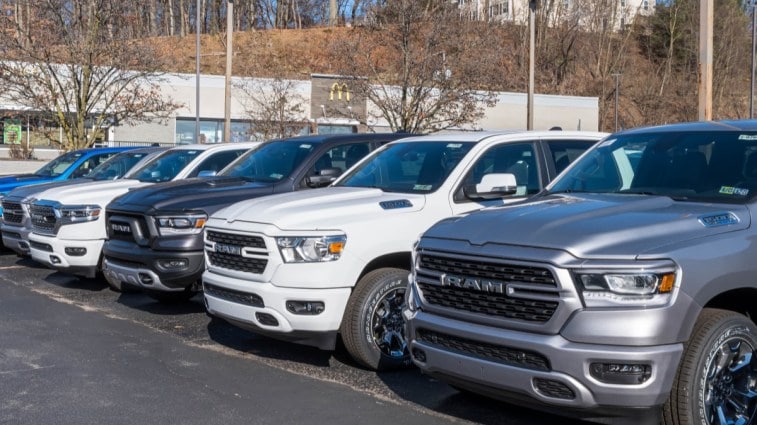
The Federal Open Market Committee of the U.S. Federal Reserve, commonly called “the Fed,” controls the interest rate for overnight loans between banks. Changes in that rate lead to changes in interest rates on consumer loans, like mortgages and car loans.
What the Fed didn’t say may be more significant than what it did say, according to Cox Automotive Chief Economist Jonathan Smoke. “What was more important was the lack of language suggesting additional firming was anticipated, which is the Fed’s way of saying further increases are less likely than not.”
Cox Automotive is the parent company of Kelley Blue Book
What Rate Increases Have Done to Car Shoppers
The Fed has raised rates in an attempt to rein in inflation. Making it more difficult for Americans to make large purchases like new homes and cars, most economists believe, will put downward pressure on prices throughout the economy.
But “the rate increases we have seen have limited who can buy vehicles,” Smoke says.
“Consumers with lower income and lower credit quality have materially dropped out of the new-vehicle market because of the combination of higher rates, tighter credit, and high vehicle prices.” That has created a cycle as automakers seek to design and build cars mostly for high-income, good-credit buyers.
Affordable cars have all but disappeared from manufacturers’ lineups. There are just four cars left on the U.S. market with starting prices under $20,000 – the Kia Rio, Kia Soul, Mitsubishi Mirage, and Nissan Versa. Meanwhile, the number of vehicles with starting prices over $60,000 keeps growing.
That pushes more shoppers into the used car market. But conditions are no better for them there. “The average used auto loan rate hit 14% in March,” Smoke notes. Used rates, he says, “are more reflective of financial market conditions.”
Related: Why the Used Car Market Is So Bad, and Won’t Get Better Soon
Used car sales are down so far this spring. The supply of used cars for sale is low and could be low for years, thanks to COVID-19-related factory shutdowns in 2020 and 2021.
What It Means for New Car Shoppers
“This summer may be brutal for its impact on consumer confidence and credit conditions,” Smoke warns.
“It is tough to project where consumer rates head from here,” he says. The supply of new vehicles has begun to grow. “New-vehicle supply is up about 70% from a year ago.”
If the Fed is genuinely done with rate hikes, increasing supply could even mean rates fall for the buyers with the best credit. Manufacturers, Smoke says, could “increase incentives, including buying down rates, to keep them more attractive.”
But a return to building affordable cars is unlikely in a time of increased volatility.
What It Means for Used Car Shoppers
For used car shoppers, the news is across-the-board bad. “Used loans and loans to consumers with less-than-perfect credit may be harder to get and feature more onerous terms than what we have seen over the past two years,” Smoke says.
With supplies tightening, high prices may be here to stay. Used car shoppers will be forced to borrow more at higher rates. Some of the usual techniques that drive monthly payments down may not be available as lenders require higher down payments and restrict loans with longer terms.
“I would not bet on lower rates or materially better credit conditions for consumers before the summer is over,” he says.







